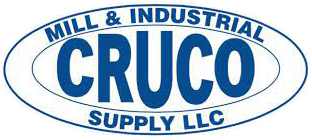From Emergency Orders to Strategic Planning: Cruco Supply’s Flexible Service Approach

In the dynamic world of business operations, supply chain needs rarely follow predictable patterns. One day you might face an urgent equipment failure requiring immediate replacement parts, while the next week demands careful strategic planning for a major facility expansion. This variability in operational requirements has made flexibility one of the most valued characteristics in modern supply chain partnerships.
The ability to seamlessly transition between emergency response and long-term strategic support separates exceptional supply chain partners from those that simply fulfill orders. Understanding this spectrum of service needs and developing capabilities to address each effectively has become essential for supply chain success.
The Emergency Response Challenge
When critical operations depend on specific components or materials, unexpected failures can bring entire facilities to a halt. Equipment breakdowns, supply disruptions, or sudden demand spikes create urgent situations where standard procurement timelines become inadequate.
Emergency response capabilities require more than just fast shipping. They demand extensive inventory networks, supplier relationships that can accommodate rush orders, and logistics systems capable of expedited handling. The infrastructure needed to support emergency orders includes access to alternative sourcing options, flexible transportation arrangements, and the ability to prioritize urgent requests without disrupting other operations.
Effective emergency response also requires deep product knowledge and technical expertise. When standard solutions aren’t available, supply chain partners must quickly identify suitable alternatives, verify compatibility, and ensure quality standards are maintained even under pressure. This technical capability becomes particularly critical when dealing with specialized industrial equipment or regulated products.
Building Responsive Infrastructure
The foundation of effective emergency response lies in infrastructure designed for flexibility and speed. This includes strategically located inventory positions that can serve multiple geographic markets, relationships with suppliers who can accommodate urgent requests, and logistics networks capable of same-day or next-day delivery when needed.
Technology plays a crucial role in emergency response capabilities. Real-time inventory visibility systems enable quick identification of available products across multiple locations. Automated order processing and tracking systems accelerate fulfillment timelines while maintaining accuracy. Communication systems ensure all stakeholders remain informed throughout the emergency response process.
Staff expertise and availability become critical factors during emergency situations. Supply chain partners must maintain personnel who understand urgent processing requirements, have decision-making authority to expedite orders, and possess the technical knowledge to address complex emergency situations effectively.
Strategic Planning: The Long-Term Perspective
While emergency response addresses immediate crises, strategic planning focuses on optimizing long-term supply chain performance and preventing future disruptions. This involves analyzing historical usage patterns, identifying potential vulnerabilities, and developing proactive strategies to improve overall supply chain resilience.
Strategic planning begins with comprehensive spend analysis and usage pattern evaluation. Understanding how different products and categories contribute to overall operations enables better decision-making about inventory strategies, supplier relationships, and contract negotiations. This analysis often reveals opportunities for consolidation, standardization, and cost reduction.
Supplier relationship management becomes a key component of strategic planning. Developing partnerships with reliable suppliers, negotiating favorable long-term agreements, and implementing supplier performance monitoring systems create stability and predictability in supply chain operations. These relationships also provide the foundation for emergency response capabilities when needed.
Balancing Immediate Needs with Future Goals
The most effective supply chain partnerships successfully balance immediate operational needs with long-term strategic objectives. This requires systems and processes that can accommodate both urgent requests and planned procurement activities without compromising either capability.
Inventory management strategies must account for both emergency requirements and cost optimization goals. This might involve maintaining strategic buffer stock for critical items while implementing just-in-time approaches for routine supplies. The key lies in understanding which products require immediate availability and which can operate with longer lead times.
Contract structures often need to accommodate both planned and unplanned purchases. Framework agreements that establish pricing and terms for routine orders while allowing for emergency additions help balance cost control with operational flexibility. Volume commitments and blanket orders can provide cost advantages while maintaining access to expedited services when needed.
Technology Integration for Flexible Operations
Modern supply chain management relies heavily on technology systems that can support both routine and emergency operations. Enterprise resource planning systems must accommodate rush orders while maintaining normal processing workflows. Inventory management systems need real-time visibility and automated reorder capabilities that can be overridden for emergency situations.
Communication systems become particularly important when managing both strategic and emergency requirements. Customers need visibility into normal order status while having direct access to emergency support when needed. Supplier communication systems must handle routine planning information as well as urgent requests for expedited service.
Data analytics capabilities help bridge the gap between emergency response and strategic planning. Historical emergency order analysis can reveal patterns that inform strategic inventory decisions. Performance metrics from both routine and emergency orders provide insights into supplier capabilities and service quality.
The Human Element in Flexible Service
While technology enables flexible service approaches, human expertise remains essential for both emergency response and strategic planning. Emergency situations often require creative problem-solving, technical knowledge, and decision-making capabilities that go beyond automated systems.
Account management teams must understand both the day-to-day operational needs and long-term strategic objectives of their clients. This knowledge enables them to provide appropriate recommendations whether addressing an immediate crisis or developing long-term supply chain improvements.
Training and development programs ensure staff members can effectively handle both routine and emergency situations. Cross-training enables team members to support different types of requests while maintaining service quality standards across all interactions.
Measuring Success Across Service Types
Performance measurement systems must account for both emergency response and strategic planning effectiveness. Emergency response metrics typically focus on speed, availability, and problem resolution capabilities. Strategic planning metrics emphasize cost optimization, service quality improvements, and long-term relationship development.
Customer satisfaction measurement should evaluate both types of service interactions. Emergency response satisfaction often relates to speed and problem-solving effectiveness, while strategic planning satisfaction focuses on value creation and relationship development. Both perspectives provide important insights into overall partnership effectiveness.
Continuous improvement processes must address both immediate response capabilities and long-term strategic planning effectiveness. Regular review of emergency situations can identify process improvements and infrastructure investments that enhance future response capabilities. Strategic planning reviews help refine long-term approaches and identify new optimization opportunities.
Building Long-Term Partnerships
The most successful supply chain relationships develop over time through consistent performance in both emergency and strategic situations. Trust builds when partners demonstrate reliable emergency response capabilities while also providing valuable strategic insights and long-term planning support.
Partnership development requires investment from both parties in understanding operational requirements, developing customized solutions, and creating communication channels that work effectively for different types of interactions. These relationships often evolve to include collaborative planning, joint problem-solving, and shared performance objectives.
Value creation in flexible supply chain partnerships extends beyond cost savings to include risk reduction, operational reliability, and strategic capability development. Partners who can effectively support both immediate needs and long-term objectives become integral to business success rather than simply transactional service providers.
The Future of Flexible Service
Supply chain service approaches continue to evolve as businesses face increasing operational complexity and competitive pressures. The ability to provide both responsive emergency support and strategic planning guidance will likely become even more important as companies seek to optimize their supply chain investments.
Emerging technologies including artificial intelligence, predictive analytics, and automated systems will enhance both emergency response and strategic planning capabilities. These tools will enable faster problem identification, more accurate demand forecasting, and improved decision-making support across all types of supply chain interactions.
Whether your organization needs immediate support for urgent operational challenges or strategic guidance for long-term supply chain optimization, the right partnership can provide both capabilities seamlessly. If you’re looking to enhance your supply chain flexibility and ensure you have access to both emergency response and strategic planning expertise, consider partnering with providers who understand the full spectrum of operational needs, like Cruco Mill & Industry Supply. The investment in comprehensive supply chain capabilities often proves invaluable when both immediate challenges and long-term opportunities arise.
